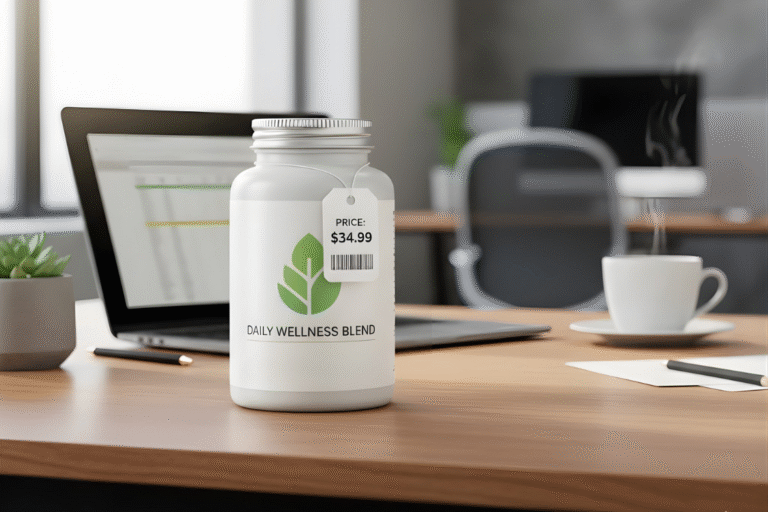Supplement label design is critical in how dietary supplements perform on the shelf and online. Labels serve as a key part of supplement packaging design, directly influencing customer trust, brand perception, and compliance with industry regulations. A well-designed supplement label helps businesses stand out from the competition, communicates product benefits clearly, and ensures that the product meets regulatory requirements.
This guide covers the full design process—from understanding effective design elements to selecting materials and printing options. You’ll learn how to create labels that not only capture attention but also match your brand’s style, support your business goals, and drive sales with confidence.
The Key Elements of an Effective Supplement Label
A supplement label must communicate essential information while also grabbing attention. Each part of the design needs to support the overall message, ensure safety, and build trust with customers.
Brand Identity – Logo, colors, and fonts that reflect your brand
Your supplement label should reflect your brand clearly and consistently. This includes using your logo, brand colors, and specific font styles that align with your brand personality. These design elements help customers recognize your products across different supplement packaging formats. A strong brand identity supports long-term recognition and builds trust, especially in a competitive space like dietary supplements.
Product Name & Benefits – Making it clear and appealing
Customers need to understand what your product is and how it helps them—fast. The product name should be easy to read and placed prominently. Include short, clear statements that describe the supplement’s intended support functions or ingredients, without making unverified health claims. This helps shoppers scan the label quickly and decide if the supplement matches their needs. A focused message increases shelf appeal and boosts the chances of a sale.
Compliance Information – Meeting FDA and industry regulations
Your supplement packaging design must include all required compliance information. This ensures the product label meets FDA guidelines and avoids legal risks. Include the appropriate disclaimers, suggested use directions, manufacturer details, and any required warnings. Keeping compliance details accurate and visible shows your business is professional and transparent.
Ingredients & Supplement Facts – Transparency for consumers
Consumers expect to know exactly what’s inside the supplements they use. The supplement facts panel should be clear, accurate, and easy to find. Include a full list of active and inactive ingredients, along with serving sizes and daily values. Transparency helps customers feel confident in your product and improves overall trust in your brand.
Certifications & Quality Seals – Organic, non-GMO, third-party tested
Adding certifications and quality seals to your vitamin labels shows that your product meets higher standards. These elements can also influence purchase decisions, especially among health-conscious buyers.
Common certifications and seals to include:
- USDA Organic
- Non-GMO Project Verified
- NSF Certified for Sport
- GMP (Good Manufacturing Practice) Certified
- Vegan Certified
- Gluten-Free
- Third-Party Lab Tested
These embellishments not only validate quality but also make your supplement packaging more competitive.
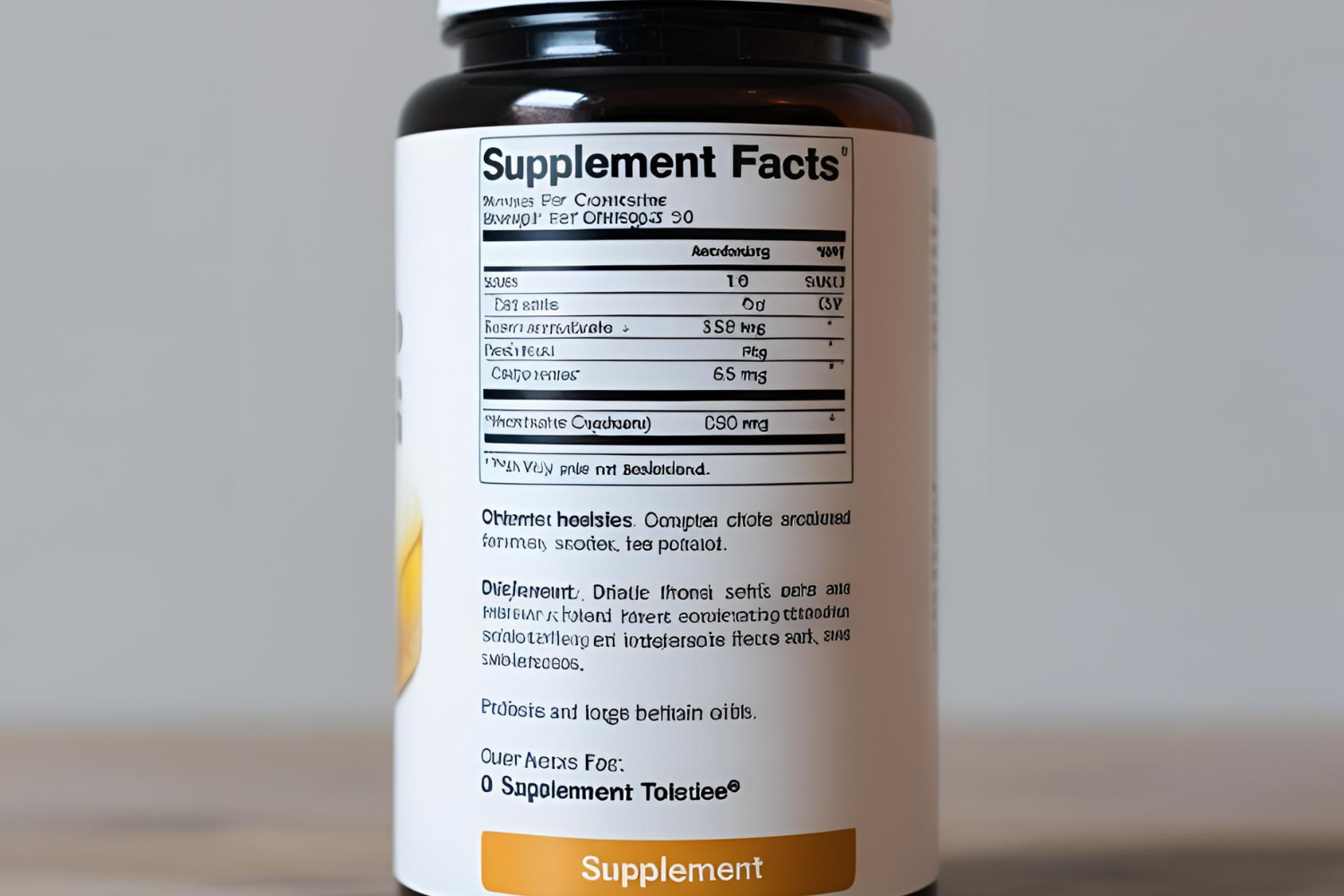
Call-to-Action (CTA) – Encouraging purchases and engagement
A well-placed call-to-action can increase conversions directly from your product labels. This could be a phrase like “Scan to Learn More,” “Try It Today,” or “Join Our Wellness Program.” A CTA gives customers the next step and connects them to your brand beyond the bottle. Use clear, action-based language that matches the tone of your brand and adds value to the user experience.

Designing a Supplement Label That Stands Out
The right design helps your product stand out in a crowded market. A mix of smart visuals, a clean layout, and strong messaging can increase both attention and sales.
Choosing the Right Colors
Color impacts how customers feel about your product. The colors used in your supplement label design should support your brand and match the product’s purpose. Color choices also affect shelf appeal and customer perception.
Best colors based on supplement type:
- Green – Natural, organic, plant-based supplements
- Blue – Calm, trust, often used for vitamins and sleep aids
- Red – Energy, strength, often used in pre-workouts or metabolism boosters
- Yellow – Positivity and focus, common in mood and brain support supplements
- Black – Premium, bold, often used in men’s health or fitness lines
Typography & Readability
Font selection impacts how easily your message is understood. Stick to clear, professional fonts that are easy to read at a glance. Avoid overly decorative styles that may confuse the user or crowd the space. Font size and weight should support hierarchy, guiding the reader from product name to benefits to supporting details. Good typography strengthens your brand and ensures your supplement packaging looks polished and professional.
Using High-Quality Graphics & Images
Visuals add personality to your supplement label but should always serve a purpose. High-resolution images and graphics enhance the look and feel of your packaging and help your supplement stand out both online and on shelves. Choose graphics that support your product’s message without distracting from key information.
| Use Case | Lifestyle Imagery | Simple, Clean Designs |
|---|---|---|
| Brand Type | Health-focused, emotional connection | Clinical, professional, minimalist |
| Audience | General consumers, wellness seekers | Athletes, medical professionals |
| Use On | Web-ready labels, DTC packaging | Bulk packaging, wholesale distribution |
| Effect | Relatable, warm, personal | Trustworthy, clear, efficient |
Label Layout & White Space
A good layout helps customers process information quickly. Use a clean structure with clear sections for product name, benefits, ingredients, and compliance details. White space helps separate these areas and keeps the design from feeling cluttered. A well-organized layout improves readability and makes your label more effective at communicating the value of your supplements. Keeping the design simple and intentional helps key elements stand out.

Meeting Supplement Label Compliance & Regulations
Supplement label compliance is essential for staying within legal guidelines and building customer trust. Each product label must follow FDA standards and include specific information to be sold legally and safely.
FDA Labeling Requirements – What must be included
Every supplement label must follow FDA regulations to avoid penalties or recalls. Required information includes the statement of identity (what the product is), net quantity of contents, directions for use, and the name and address of the manufacturer or distributor. Labels must also display a complete list of ingredients and any necessary warning statements. Keeping these details clear and in the right location helps your business stay compliant and maintain trust with consumers.
Supplement Facts Panel – Correct formatting and placement
The supplement facts panel is one of the most critical parts of a dietary supplement label. It must include serving size, servings per container, the amount of each ingredient per serving, and the percent daily value. The panel must follow FDA formatting rules and appear in a visible location on the packaging. Consistency in this section shows professionalism and supports customer confidence in your supplements.
Health Claims & Legal Considerations – What you can and cannot say
Marketing statements must follow strict rules. Health claims that suggest a supplement can treat, cure, or prevent disease are not allowed without FDA approval. Instead, labels may include structure/function claims, such as “supports immune health,” if they are truthful, supported by evidence, and accompanied by the required FDA disclaimer. Misleading or unverified claims can lead to legal problems and harm your brand’s reputation, so reviewing each statement during the design process is essential.
Barcode & Expiration Date – Essential elements for retail sales
Retail-ready supplement packaging typically includes a barcode for scanning and an expiration or best-by date when stability data is available, although these are not mandatory under FDA regulations. The barcode helps with tracking, inventory management, and scanning at the point of sale. Expiration dates ensure product safety and show that your business is committed to quality. These elements make your packaging look more complete and professional, especially for stores and distributors who expect standard labeling practices.
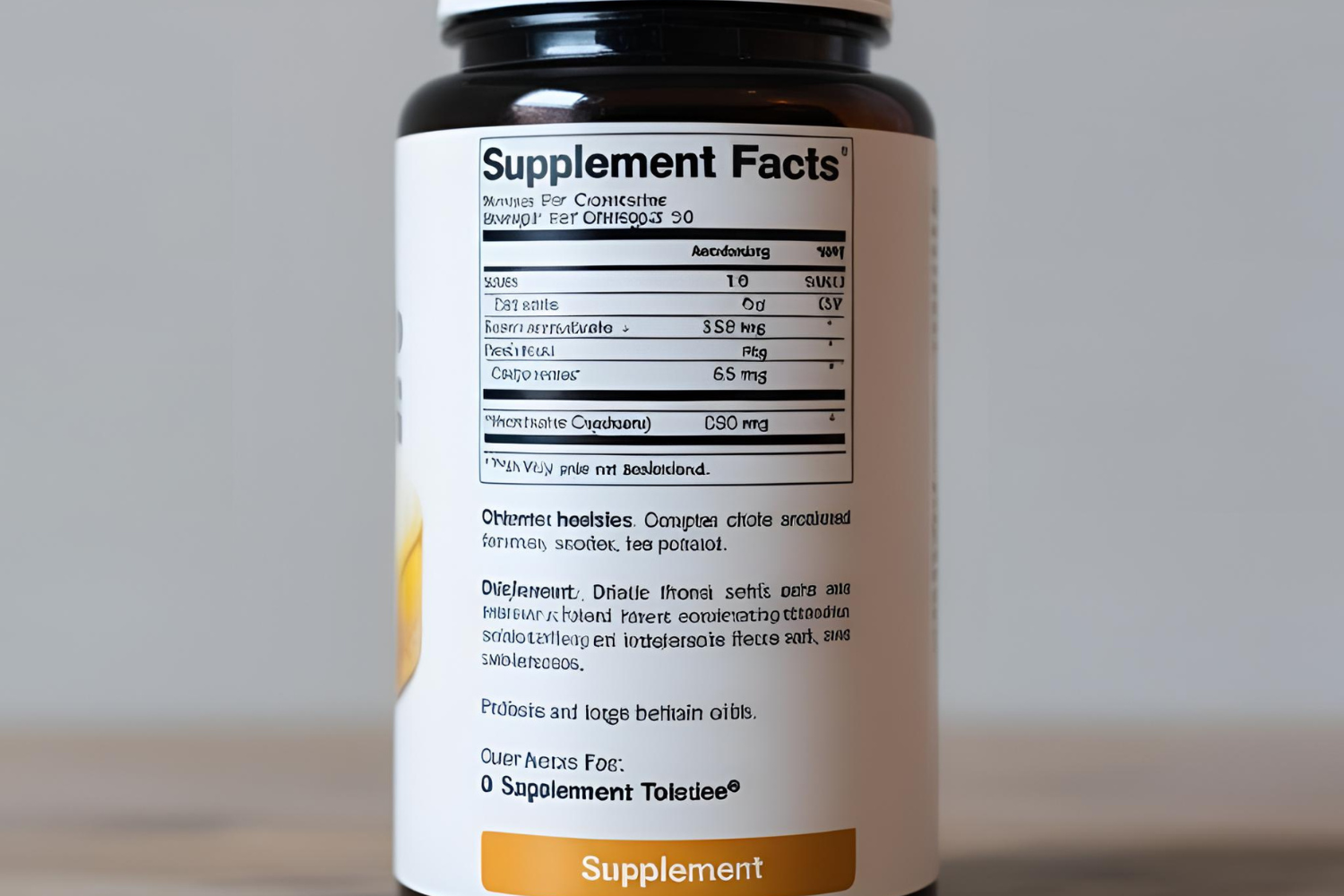
Custom vs. Pre-Designed Labels: Which Is Best?
Choosing between custom and pre-designed labels depends on your business goals, budget, and timeline. Both options offer value, but the right fit depends on how you want your supplement packaging to reflect your brand.
Custom Labels – Tailored to your brand but higher cost
Custom supplement labels are designed from scratch to match your exact brand style, colors, and message. This option gives you full control over layout, design elements, and materials, allowing your product to stand out. Custom labels offer flexibility and uniqueness, which is helpful when building a strong brand identity. However, custom design takes more time and often comes at a higher price, especially if you work with a full design team.
Pre-Designed Templates – Budget-friendly but less unique
Pre-designed label templates are a faster and more affordable option for small businesses or first-time supplement sellers. These templates often include common design elements and layouts for vitamin labels, making them easy to customize with your product name and details. While they save time and money, they may not stand out as much in a crowded market. Still, this option works well for businesses focused on testing new products or managing a tight launch schedule.
Working with a Professional Designer – When to invest in expert design
Hiring a professional designer is a smart step when your project requires high-quality visuals, complex layouts, or custom supplement packaging. A designer can help you determine what style best matches your brand, ensure compliance, and select the right printing materials. Their experience can also reduce mistakes during the design process, which saves time and keeps the launch on track. This investment is beneficial when aiming for a premium look or preparing to enter retail channels.
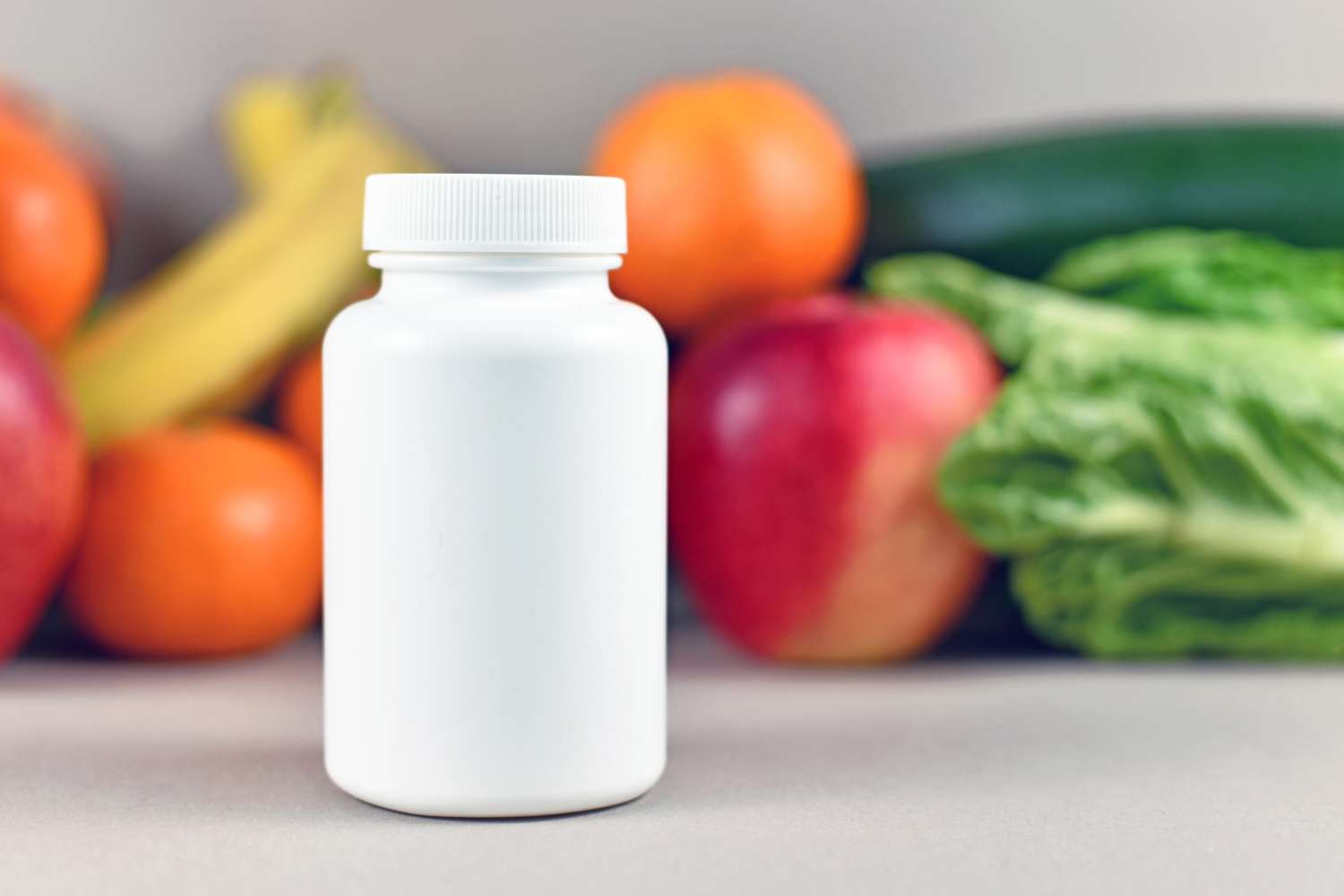
Printing & Material Options for Supplement Labels
Choosing the right materials and printing style can improve the look and durability of your supplement packaging. These decisions affect not just appearance but also how your product holds up during shipping, storage, and use.
Choosing the Right Label Material – Paper vs. plastic vs. eco-friendly options
The material you select for your supplement label impacts both style and function. Paper, plastic, and eco-friendly materials each have benefits depending on your packaging needs and product type. Selecting the right one helps your supplement stand out while meeting your business goals.
| Material | Pros | Cons | Best For |
| Paper | Cost-effective, easy to print, natural look | Not moisture-resistant, can tear easily | Dry supplements, eco-style branding |
| Plastic | Durable, waterproof, flexible for custom shapes | Less eco-friendly, slightly higher price | Liquids, sports supplements, long shelf life |
| Eco-friendly | Sustainable, great for natural or green branding | Limited finish options, higher price | Organic supplements, environmentally focused brands |
Waterproof & Heat-Resistant Labels – Best for certain supplement types
Some supplements need extra protection due to how they’re used or stored. Waterproof and heat-resistant labels are ideal for liquid vitamins, workout powders, or items stored in humid or warm environments. These labels prevent smudging, fading, or peeling, which helps your packaging remain durable and professional during storage and handling. Choosing durable materials adds confidence for both your team and your customers.
Matte vs. Glossy Finish – Pros and cons of each
The finish on your product labels affects how they look and feel. A matte finish gives a soft, smooth appearance and works well for natural or luxury supplement brands. It reduces glare and is easy to read in different lighting. Glossy finishes, on the other hand, are shiny and vibrant, making colors and images pop. However, they can reflect light and may show fingerprints. Your choice should match the style of your supplement packaging and brand message.
Cost Considerations for Bulk Printing – Balancing quality and budget
Bulk printing helps lower your price per label, but balancing cost with quality is important. Choosing cheaper materials or low-quality printing may save money upfront but can hurt your product’s shelf appeal and customer trust. Working with reliable printing services allows you to select affordable options while still getting strong results. Factor in quantities, label sizes, finish, and special embellishments to match your budget and expectations.
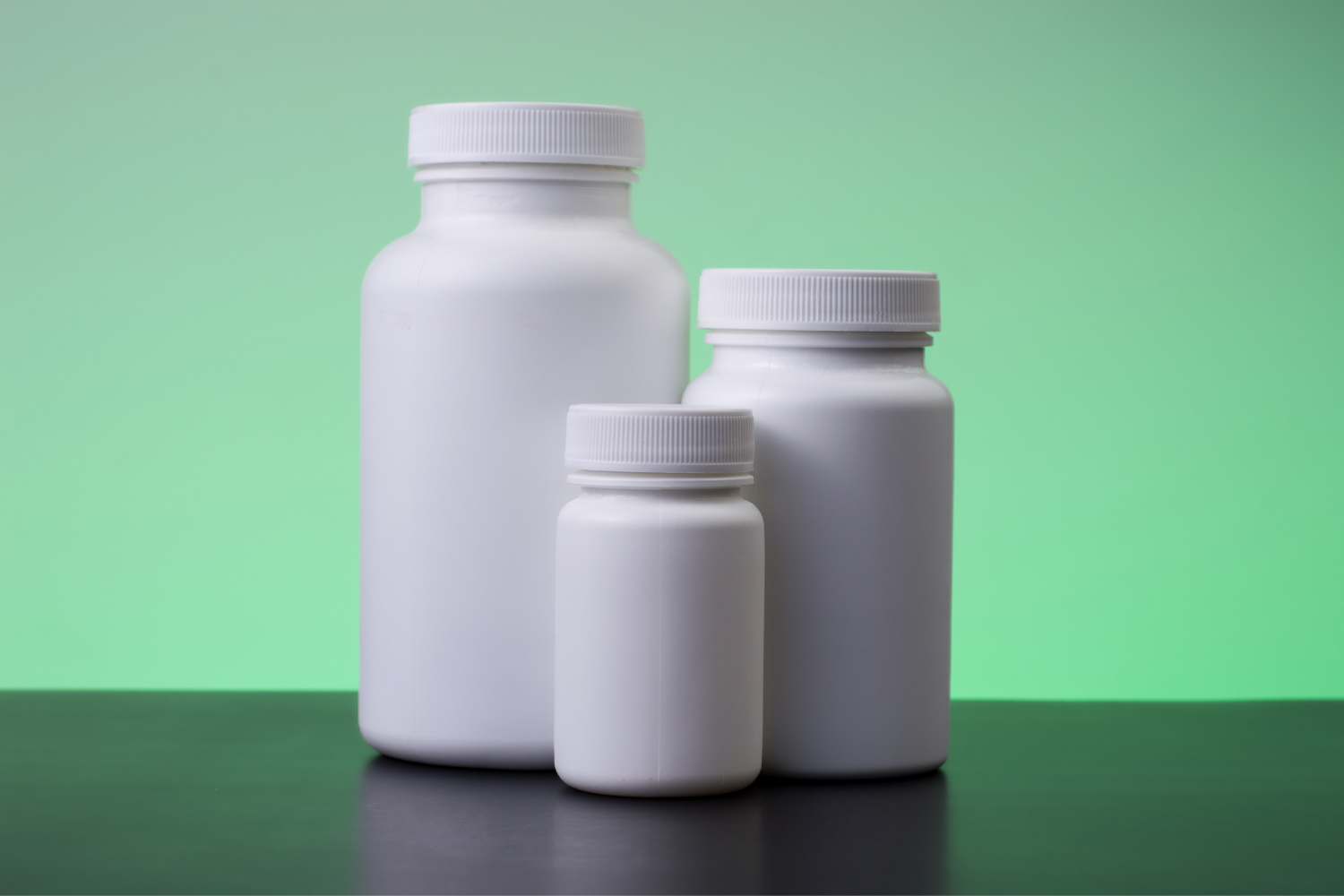
Common Mistakes to Avoid in Supplement Label Design
Even small design errors can hurt your product’s effectiveness or lead to legal issues. Understanding what to avoid helps your supplement label design stay clear, compliant, and professional.
Common mistakes to avoid:
- Cluttered layouts that confuse buyers
- Poor font choices that make text hard to read
- Using misleading claims that can lead to legal issues
- Ignoring FDA compliance requirements
Avoiding these issues supports your business reputation and helps your supplement packaging design stay effective and trustworthy.
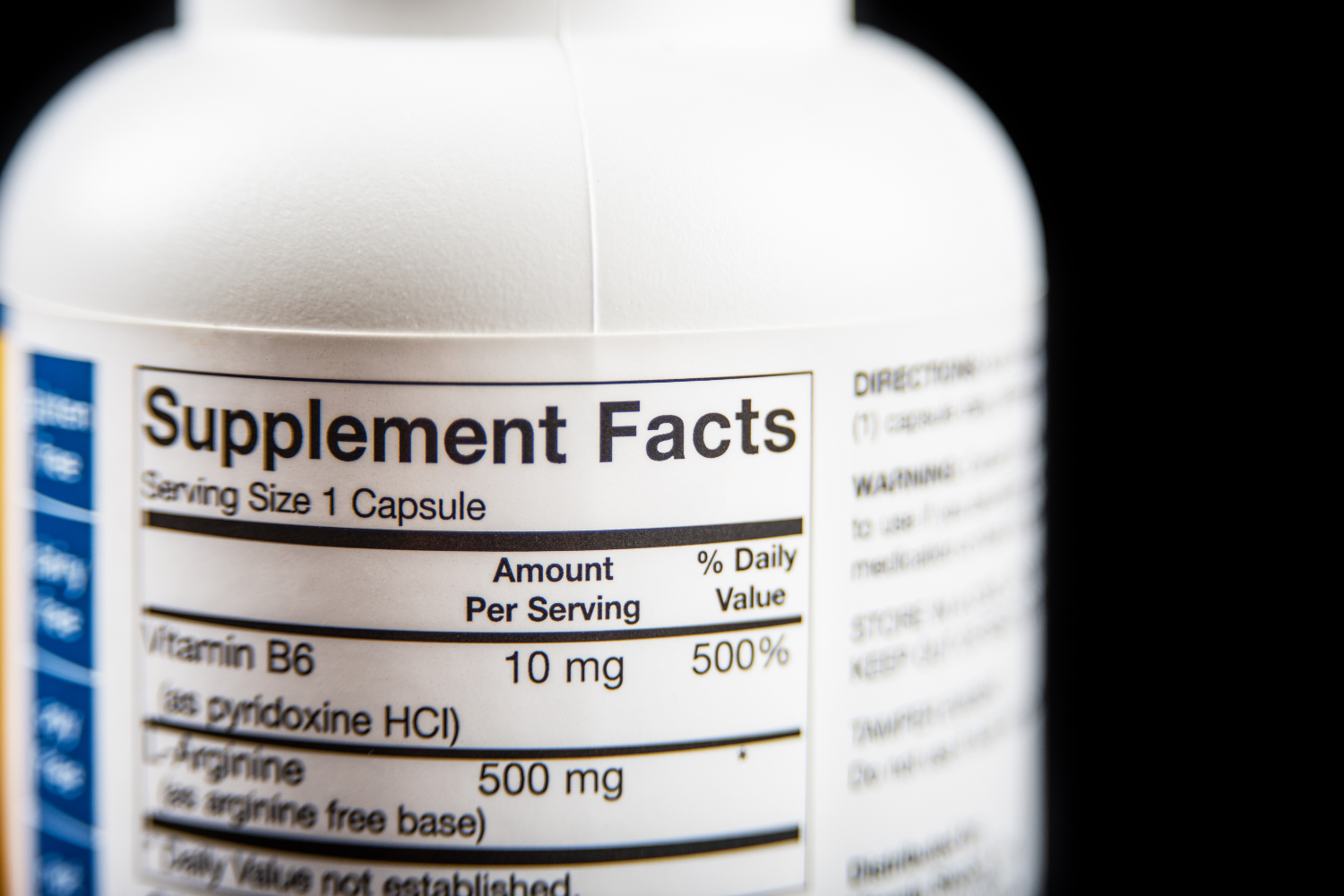
Where to Get Supplement Labels Designed & Printed
Getting the right help for your supplement label design makes a big difference. Depending on your project needs and budget, you can choose to use design tools, printing services, or hire professionals.
Recommended design tools and software
Online platforms like Canva, Adobe Illustrator, and Affinity Designer offer flexible options for creating custom product labels. Some tools include templates made for vitamin labels, making it easier to create designs that follow industry standards. These tools are helpful for small businesses or those who want to design in-house.
Best online printing services for supplement labels
Top-rated online printing services like Sticker Mule, Avery, and UPrinting offer a range of label materials, sizes, and finishes. These platforms allow you to upload your design, select options, and order in bulk. Some even offer sample prints so you can review quality before committing to a full run.
Finding professional designers for high-quality branding
Working with a professional designer can help your supplement packaging look polished and unique. Platforms like Upwork, 99designs, or Fiverr offer access to experienced designers specializing in product labels. You can also partner with full-service design teams that handle the entire process—from concept to printing—especially if you launch a premium line or rebrand your supplements.

Final Thoughts on Creating Effective Supplement Labels That Drive Sales
An effective supplement label design blends clarity, compliance, and brand personality into a package that appeals to new and returning customers. A strong label not only reflects your product’s value but also helps increase trust and encourages repeat purchases. From selecting design elements and materials to aligning with regulatory standards, each step in the design process supports your business goals. Moving forward, focus on finalizing your label with the help of a professional designer or trusted platform, select the right printing options, and ensure your packaging is ready to compete in today’s growing supplements market.
Frequently Asked Questions
What should be included on a supplement label to meet FDA requirements?
A supplement label must include the supplement facts panel, ingredient list, net contents, usage instructions, manufacturer details, and any required disclaimers.
How do I make my supplement label stand out on shelves?
Use bold colors, clear fonts, and a clean layout highlighting your product’s benefits and matching your brand identity.
Can I use health claims on my supplement packaging?
Only structure/function claims that are supported by evidence and include the required FDA disclaimer are allowed; claims to treat or cure diseases are not permitted.
What’s the best material for supplement packaging labels?
Choose based on your product type—plastic for durability, paper for a natural look, and eco-friendly materials for sustainable branding.
Where can I get supplement labels designed and printed?
Use tools like Canva or Adobe for design and services like Avery or UPrinting for professional supplement label printing.
References
- U.S. Food and Drug Administration. (2022). Current Good Manufacturing Practice (CGMP) Regulations. https://www.fda.gov/drugs/pharmaceutical-quality-resources/current-good-manufacturing-practice-cgmp-regulations
- U.S. Food and Drug Administration. (2005). Dietary Supplement Labeling Guide. https://www.fda.gov/food/dietary-supplements-guidance-documents-regulatory-information/dietary-supplement-labeling-guide
- U.S. Food and Drug Administration. (2005). Dietary Supplement Labeling Guide: Chapter IV. Nutrition Labeling. https://www.fda.gov/food/dietary-supplements-guidance-documents-regulatory-information/dietary-supplement-labeling-guide-chapter-iv-nutrition-labeling
- U.S. Food and Drug Administration. (2018). Small Entity Compliance Guide: Current Good Manufacturing Practice in Manufacturing, Packaging, Labeling, or Holding Operations for Dietary Supplements. https://www.fda.gov/regulatory-information/search-fda-guidance-documents/small-entity-compliance-guide-current-good-manufacturing-practice-manufacturing-packaging-labeling
- U.S. Food and Drug Administration. (2024). Structure/Function Claims. https://www.fda.gov/food/nutrition-food-labeling-and-critical-foods/structurefunction-claims

